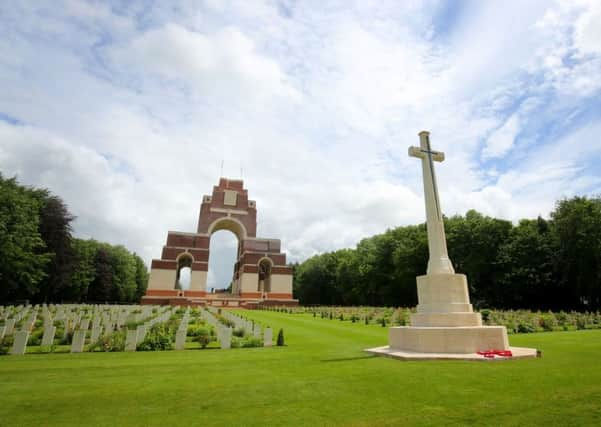'˜My great-grandfather would be proud of Somme commemorations'


The ferocious engagement which began on July 1, 1916, went on to last for many months and was among the bloodiest battles in the history of humankind – and one in which Ulstermen played a highly-prominent part.
Events are set to take place across Northern Ireland to commemorate the carnage.
Advertisement
Hide AdAdvertisement
Hide AdIn addition, there will be commemorations across the UK and on continental Europe.


Carol Walker, the director of the Somme Association (which runs the Somme Museum in Conlig, north Down) is helping to organise an event at Thiepval, northern France, starting at 7.30am on Friday.
She has been attending annual commemorations for the Somme in France for 23 years.
She told the News Letter that arranging the event has major significance for her own family.
Advertisement
Hide AdAdvertisement
Hide Ad“To me, it’s very personal, because my own great-grandfather served with the 36th Ulster Division, and he was here on the morning of the 1st of July,” she said, speaking from France as final preparations were underway.


“He was in the 9th Royal Inniskilling Fusiliers. He was part of the advance out of Thiepval Wood.
“And he survived – he survived the Battle of the Somme, and went through all the campaigns of the division.
“But he was sadly killed two weeks before the end of the war, whilst liberating a village in Belgium.”
Advertisement
Hide AdAdvertisement
Hide AdHis name was Private Charles Grundy. He left a widow and five children, all under the age of 10. He was 38.
Asked what he might have made of all the commemorations now taking place for those who fought at the Somme, she said: “I like to think he’d be very proud of the fact that we today, 100 years on, still remember the sacrifice that so many of his comrades and himself made for our freedom today.”
Present at the event she is organising on Friday will be the First and Second Battalions of the Royal Irish Regiment, comprised of about 45 soldiers and officers, plus a similar number of bandsmen.
It will be a private ceremony, and will see soldiers lay a trio of crosses in memory of the three brigades of the 36th Ulster Division – 107 Brigade, 108 Brigade and 109 Brigade.
Advertisement
Hide AdAdvertisement
Hide AdIn exactly the same area, one century earlier, the soldiers of these brigades had begun a fierce charge across no man’s land towards the German lines from the nearby Thiepval wood.
Facing them was “the most heavily fortified location on the western front – the Schwaben redoubt”.
Mrs Walker said some were successful in taking German positions – particularly east Belfast men from a regiment called The 8th Rifles.
But this overall initial attacking wave was forced back.
Mrs Walker said that the Division as a whole had numbered between 10,000 and 12,000 at that time.
Advertisement
Hide AdAdvertisement
Hide AdBy the end of the first day of the assault, about 3,300 of the Division had been wounded or were missing.
Roughly 2,200 were dead.
She said the Division continued to participate in fighting until being relieved on the morning of July 3 by the West Riding regiment.
However the first day was the worst of the three, said Mrs Walker.
After that, “they were trying to get back into Thiepval Wood and get themselves reorgnaised again”.
Advertisement
Hide AdAdvertisement
Hide AdShe said it is difficult to estimate how many of the Division ultimately died as a result of the Somme, said Mrs Walker.
“It’s hard to quote casualty figures, because soldiers died later on of their wounds,” she said.
In total, the whole Battle of the Somme lasted 141 days.
In addition to the 36th Ulster Division, other soldiers from the island of Ireland who were present at the battle included the 29th Division who contained a regiment of the Dublin Fusiliers, and of the Royal Inniskilling Fusiliers – each containing perhaps 500 men.
She said she is currently working hard to ensure that her event on Friday is “respectful and dignified”.
Advertisement
Hide AdAdvertisement
Hide Ad“I think the sheer loss of life deserves that respect, and deserves the honour we’re giving to them on the 1st of July.
“It’s great to see so many people – and particularly the younger generation – remembering the sacrifice.”
The Somme Museum, which Mrs Walker’s association runs, opened in 1994 – four years after the association was founded.
Events are taking place at the museum on July 1, 2 and 3.
See here for more details: www.sommeassociation.com/events/